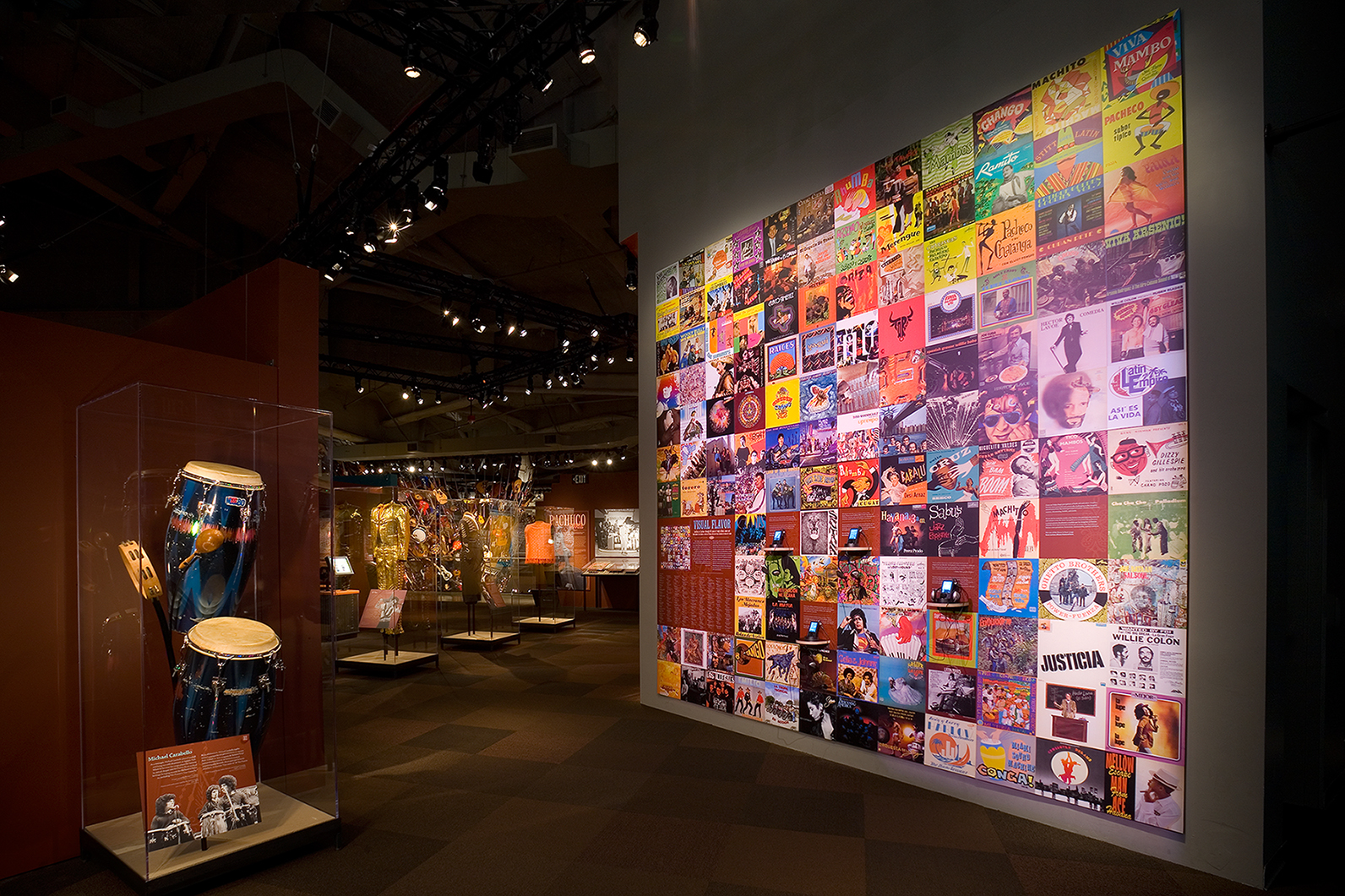“American Sabor: Latinos in U.S. Popular Music” Opens at the Smithsonian
The Smithsonian Latino Center opens “American Sabor: Latinos in U.S. Popular Music” July 11 in the Ripley Center’s International Gallery located next to the Smithsonian Castle on the National Mall. This 5,000-square-foot exhibition, created by EMP Museum in Seattle in partnership with the University of Washington, focuses on five centers of Latino popular music in America since World War II: New York City, Los Angeles, Miami, San Antonio and San Francisco. The bilingual exhibition contains 45 interviews with Latino musicians, 100 artifacts such as costumes and musicians’ instruments, interactive elements, including keyboards and a mixing board, and a dance floor where visitors can move to their favorite Latin rhythms. The exhibit is on view through Oct. 9 and includes public programs, tours and a family day during Hispanic Heritage month
(Sept. 15–Oct. 15).
“American Sabor” focuses on themes such as the effects of migration and immigration on Latino and popular music, ways that Latinos express their experience through music and how musical innovations have crossed ethnic and racial boundaries.
“Ford Motor Company Fund is proud to support ‘American Sabor’ as part of our long-standing commitment to Hispanic arts and culture,” said Jim Vella, president, Ford Motor Co. Fund and Community Services. “Visitors to the exhibition will experience the many contributions that Hispanic musicians have made to American music and the richness of Latino sounds.”
Exhibition highlights include:
- 100 artifacts, including Ritchie Valens’ Mexican-style vest he wore on American Bandstand in 1958; a black mariachi suit designed by Manuel for Linda Ronstadt; a gown worn by salsa star Celia Cruz; a Bajo Sexto guitar and Stetson hat formerly owned by Doug Sahm; a Harmony Meteor electric guitar owned by Cesar Rosas of Los Lobos; a trombone belonging to salsa star Willie Colón; and a pair of congas belonging to Michael Carabello, one of the original percussionists in the Santana band
- Films with in-depth interpretations to better understand Latino music, rhythms and culture
- Maps that show the migration of Latino artists and genres
- Listening kiosks that allow visitors to listen to songs in a sound-controlled environment and narration about the significance of key songs
- Interactive elements, including a keyboard with keys that light up and show visitors how to play hooks from well-known Latino songs and a mixer that allows visitors to remix Latino songs
“Growing up in Texas I remember watching many performances by talented Latino musicians and saw first-hand how their wonderful styles and musical traditions enriched our communities,” said Laura J. Hernandez, executive director, Diverse Markets AT&T, and board member, Smithsonian Latino Center. “It’s important to celebrate these talented artists, our music and its positive impact on this country, and I’m very much looking forward to the exhibition.”
The Smithsonian Institution Traveling Exhibition Service (SITES) is currently touring a 2,500-square-foot version of “American Sabor” designed for smaller museums and cultural centers. Details about the national tour of exhibition and additional information about the cities, musicians and musical styles featured can be found at www.americansabor.org.
The Ford Motor Company Fund is the national tour sponsor for American Sabor. Additional support for the exhibit and related programs has been provided by AT&T, Anheuser-Busch Foundation, Univision Communications Inc., Time Warner Foundation Inc. and the Smithsonian Latino Initiatives Pool.
# # #
SI-255-2011

